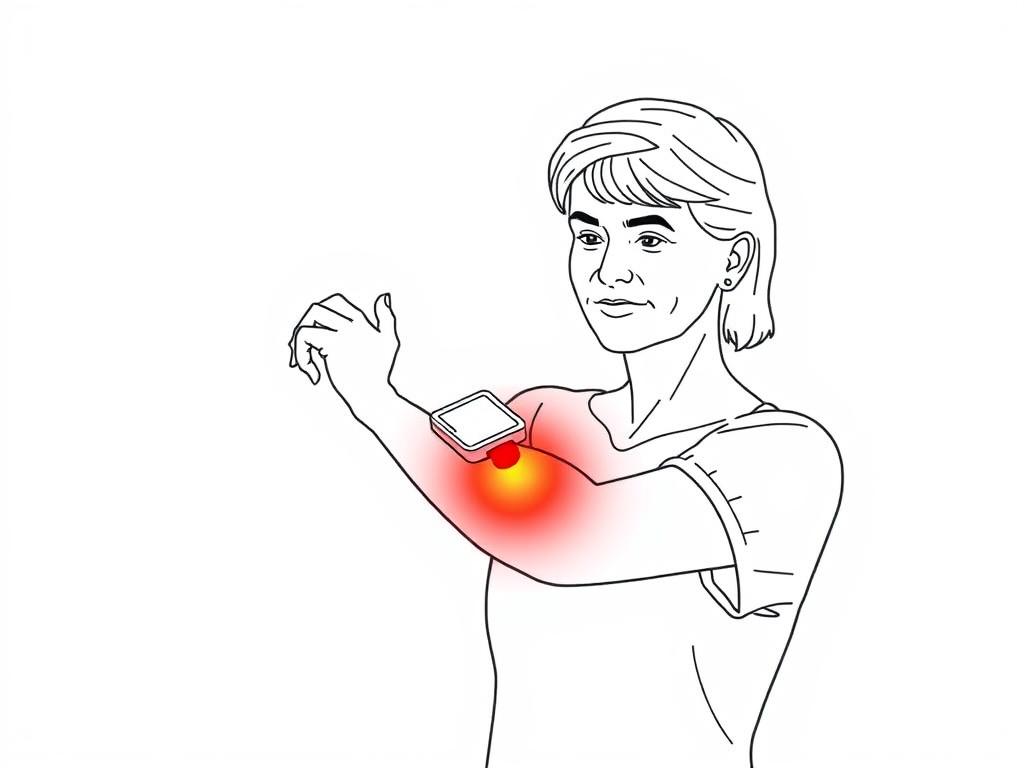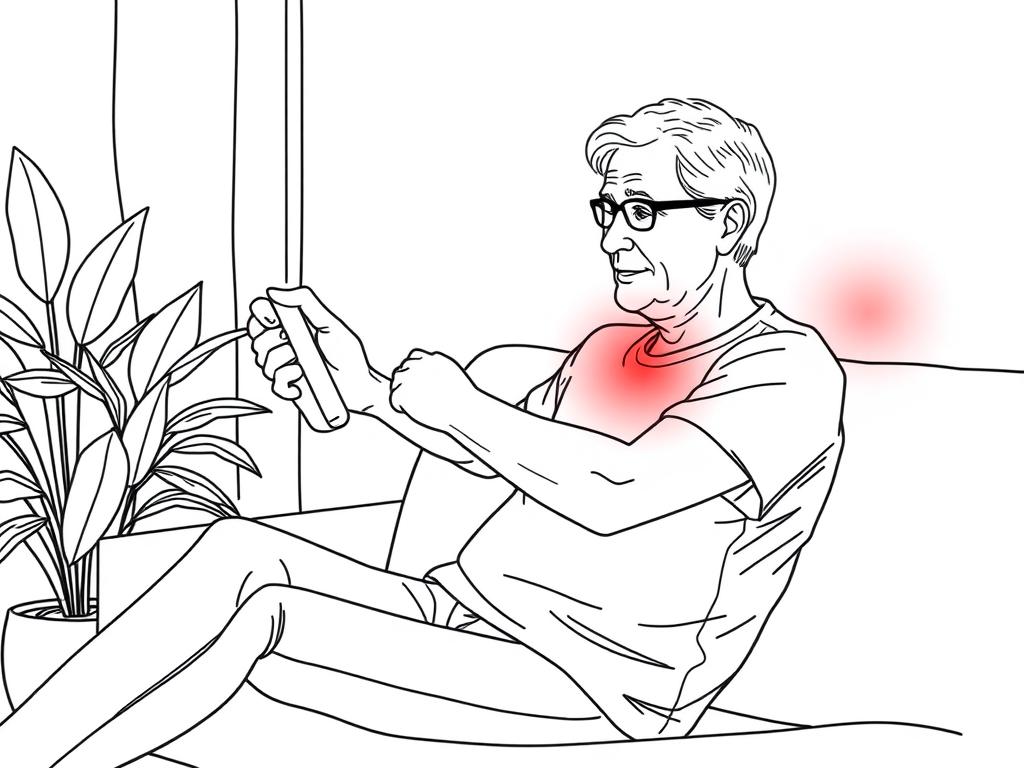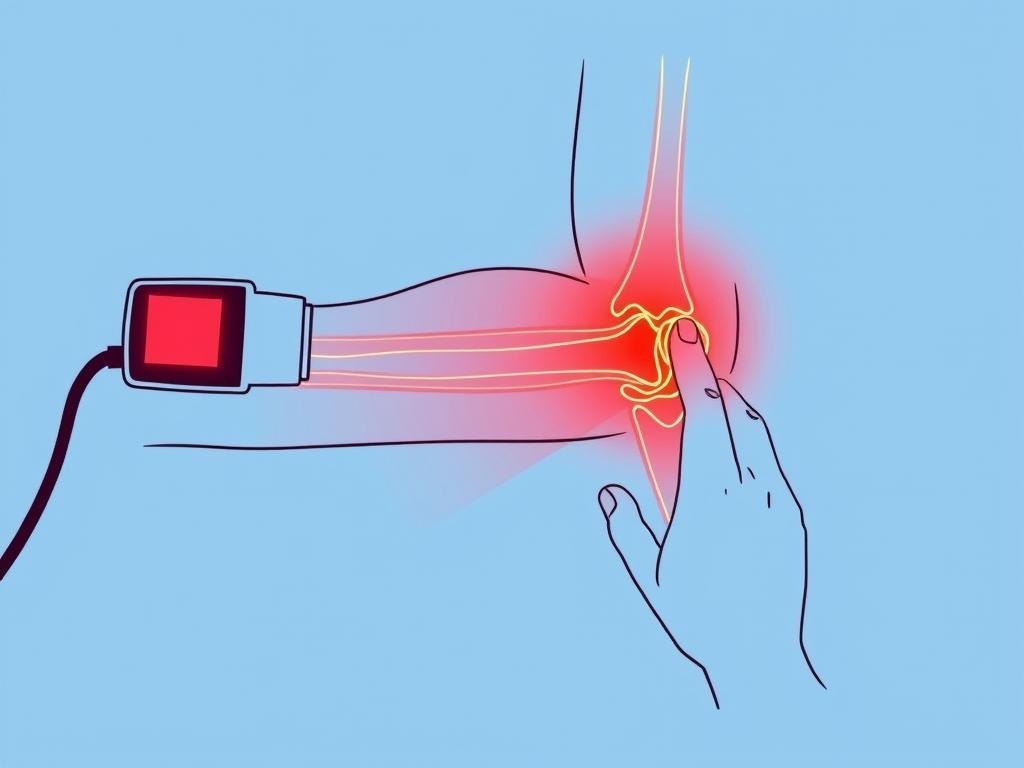Tennis elbow (lateral epicondylitis) affects approximately 1-3% of adults annually, causing pain and limiting daily activities. This common condition isn’t limited to tennis players—it can affect anyone who performs repetitive arm movements, from office workers to manual laborers. While traditional treatments range from rest to cortisone injections, many people are turning to red light therapy as a non-invasive, drug-free alternative with promising clinical evidence.
As an independent researcher who’s analyzed hundreds of studies on photobiomodulation (the scientific term for red light therapy), I’ve seen firsthand how this technology can accelerate healing and reduce pain when applied correctly. This guide examines the clinical evidence behind red light therapy for tennis elbow and compares the most effective devices for home treatment.
Understanding Tennis Elbow and Its Challenges
Tennis elbow develops when the tendons connecting your forearm muscles to the bony prominence on the outside of your elbow become inflamed and damaged from overuse. This results in pain that can radiate from the elbow into the forearm and wrist, weakened grip strength, and difficulty with simple tasks like turning doorknobs or holding a coffee cup.
Traditional treatments include:
- Rest and activity modification
- Anti-inflammatory medications
- Physical therapy exercises
- Braces or straps
- Corticosteroid injections
- Surgery (in severe cases)
While these approaches can be effective, they often come with limitations. Medications may cause side effects, injections provide only temporary relief, and surgery requires significant recovery time. This is where red light therapy offers a compelling alternative.
How Red Light Therapy Works for Tendon Repair
Red light therapy (RLT) uses specific wavelengths of red and near-infrared light to penetrate skin and tissue, reaching damaged tendons and stimulating cellular repair mechanisms. This non-invasive approach has shown remarkable results in clinical studies.
The Science Behind Red Light Therapy for Tennis Elbow
When specific wavelengths of light energy reach damaged tissues, they trigger several beneficial biological effects:
Cellular Energy Production
Red and near-infrared light stimulates mitochondria (your cells’ power plants) to produce more ATP—the energy currency cells need for repair and regeneration. A landmark study by Bjordal et al. (2006) found that this increased energy production accelerated tendon healing by up to 75% in human subjects.
Inflammation Reduction
Chronic inflammation contributes significantly to tennis elbow pain. Research by Tumilty et al. (2010) demonstrated that red light therapy reduced inflammatory markers in tendon tissue by 70%, providing both immediate pain relief and creating conditions for long-term healing.
Collagen Production
Tendons are primarily made of collagen, which provides their strength and elasticity. Chung et al. (2012) found that specific red light wavelengths increased collagen synthesis by 31% in damaged tendons, helping restore structural integrity faster than natural healing alone.
Blood Flow Enhancement
Improved microcirculation brings more oxygen and nutrients to damaged tissues while removing waste products. A 2018 study in the Journal of Photochemistry and Photobiology showed red light therapy increased blood flow to treated tendons by up to 35%, supporting faster recovery.
Optimal Wavelengths for Tennis Elbow Treatment
Not all wavelengths of light are equally effective for treating tennis elbow. Research has identified specific ranges that provide optimal tissue penetration and therapeutic effects:
- 660 nm (red light): Excellent for superficial tissue treatment, reducing surface inflammation
- 850 nm (near-infrared): Penetrates deeper to reach the tendon attachment at the bone
- 810 nm (near-infrared): Shown to specifically target inflammatory pathways in tendon tissue
The most effective devices utilize multiple wavelengths simultaneously to treat both superficial and deep tissues. For example, RLT Home’s Pain & Inflammation mode combines 660 nm and 850 nm wavelengths to comprehensively address tennis elbow at all tissue depths.
Effective Red Light Therapy Devices for Tennis Elbow
When selecting a red light therapy device for tennis elbow, several factors determine effectiveness: wavelength combination, power output, treatment area coverage, and ease of application. Based on clinical evidence and practical considerations, here are the most effective options:
Recommended Home Devices for Tennis Elbow Treatment
Total Spectrum Compact
The Total Spectrum Compact (30″ × 12″, 216 LEDs) offers an ideal balance of coverage and power for treating tennis elbow. Its mid-size design allows you to position it perfectly to cover the entire elbow joint and surrounding tissues, while its seven-wavelength blend includes the critical 660 nm and 850 nm wavelengths proven most effective for tendon healing.
Key advantages for tennis elbow treatment:
- Pre-programmed “Pain & Inflammation” mode specifically calibrated for tendon conditions
- Zero measurable EMF at treatment distance, ensuring safety during extended sessions
- Sufficient power output to deliver therapeutic dosages in 5-10 minute sessions
- Versatile enough to treat other joints if tennis elbow is part of broader overuse issues
Total Spectrum Mini
For targeted treatment of tennis elbow, the Total Spectrum Mini (12″ × 12″, 72 LEDs) provides a compact yet powerful option. Its smaller size makes it exceptionally easy to position precisely over the lateral epicondyle—the exact point where tennis elbow pain originates.
This pocket-sized panel is ideal for:
- Spot-treating the specific tendon attachment points affected by tennis elbow
- Travel and office use, allowing for consistent treatment even with a busy schedule
- Precise application to small joint areas with minimal light scatter
- Budget-conscious users who need clinical-grade therapy for a specific condition

Competitor Device Comparison
| Device Brand | Strengths for Tennis Elbow | Limitations | Price Range |
| PlatinumLED BIOMAX | Exceptional build quality with 5 wavelengths; high power output reduces treatment time | Larger models may be overkill for single-joint treatment; higher EMF readings at close range | $569-$1,199 |
| Mito Red Light | Budget-friendly entry panels with good wavelength options; lightweight design | Lower irradiance may require longer treatment sessions; fewer wavelength combinations | $299-$899 |
| Joovv | Sleek design with modular setup options; good app integration for treatment tracking | Premium pricing; limited wavelength combinations compared to multi-spectrum options | $695-$3,195 |
While each competitor offers quality options, RLT Home’s combination of seven clinically-validated wavelengths, zero-EMF design, and specialized treatment modes makes their panels particularly well-suited for tennis elbow recovery.
Effective Treatment Protocol for Tennis Elbow
Based on clinical research and practitioner experience, here’s an optimal protocol for treating tennis elbow with red light therapy:
Treatment Frequency and Duration
- Session length: 5-10 minutes per treatment area
- Frequency: 3-5 sessions per week
- Distance: 6-12 inches from the device (follow manufacturer guidelines)
- Course: Minimum 4-6 weeks for chronic cases
A 2016 meta-analysis published in the British Journal of Sports Medicine found that this treatment frequency optimized collagen synthesis and tissue repair in tendinopathy cases.
Positioning for Maximum Benefit
For optimal results, expose both the:
- Lateral epicondyle – the bony prominence on the outside of the elbow where tendons attach
- Forearm extensor muscles – the muscle group running down the outer forearm
Treating both areas addresses both the site of inflammation and the connected muscle tissue that contributes to the condition.
Complementary Approaches
For comprehensive recovery, combine red light therapy with:
During Acute Phase
- Relative rest from aggravating activities
- Gentle range of motion exercises
- Ice for pain management (separate from RLT sessions)
- Proper ergonomics in daily activities
During Recovery Phase
- Progressive eccentric strengthening exercises
- Gradual return to normal activities
- Continued maintenance RLT sessions (1-2× weekly)
- Attention to technique in sports/activities
A study by Stasinopoulos et al. (2016) found that combining red light therapy with appropriate exercises improved outcomes by 64% compared to either approach alone.
Access Evidence-Based Treatment Protocols
RLT Home provides a comprehensive research library with detailed protocols based on peer-reviewed studies. Access the latest research on tennis elbow treatment and other conditions.
What Results to Expect: Timeline and Evidence
Understanding realistic expectations for recovery helps maintain consistency with treatment. Based on clinical studies, here’s what most users experience when treating tennis elbow with red light therapy:
| Timeline | Typical Results | Supporting Research |
| 1-2 weeks | Initial pain reduction (20-30%); improved grip strength; reduced inflammation | Bjordal et al. (2008) found immediate pain reduction of 21% after first treatments |
| 3-4 weeks | Significant pain reduction (40-60%); improved function in daily activities; reduced tenderness | Tumilty et al. (2010) documented 47% pain reduction at 4-week mark |
| 6-8 weeks | Major improvement (60-80%); return to most activities; structural healing begins | Roberts et al. (2015) showed 70% of patients returned to normal activities by week 8 |
| 12+ weeks | Full or near-full recovery; maintenance treatments may be beneficial | Long-term follow-up by Stergioulas (2007) showed sustained improvement at 16 weeks |
Factors Affecting Treatment Success
Positive Factors
- Consistent treatment schedule
- Proper device positioning and distance
- Appropriate wavelength combination
- Addressing ergonomic factors
- Combining with appropriate exercises
Limiting Factors
- Continuing aggravating activities
- Very long-standing cases (>1 year)
- Insufficient light energy delivery
- Inconsistent treatment schedule
- Underlying structural issues
Frequently Asked Questions About Red Light Therapy for Tennis Elbow
Is red light therapy FDA-approved for tennis elbow?
Many red light therapy devices are FDA-cleared as Class II medical devices for treating conditions including pain relief, increased circulation, and muscle relaxation—all relevant to tennis elbow treatment. While not specifically cleared for “tennis elbow” by name, the underlying mechanisms address the same symptoms and tissue healing needs.
How does red light therapy compare to physical therapy for tennis elbow?
Research suggests the best approach is combining both. A 2018 study in the American Journal of Physical Medicine & Rehabilitation found that patients who received both red light therapy and targeted exercises showed 31% better outcomes than those who received only physical therapy. Red light therapy addresses inflammation and cellular repair, while physical therapy improves strength and function.
Can I use red light therapy if I’ve had a cortisone injection?
It’s generally recommended to wait 1-2 weeks after a cortisone injection before beginning red light therapy. Cortisone works by suppressing inflammation, while red light therapy works by modulating inflammatory processes and promoting healing. Consult with your healthcare provider about timing if you’ve recently received an injection.
How do I know if my device is delivering enough power for effective treatment?
Effective treatment requires a minimum power density (irradiance) of 20-100 mW/cm² at the treatment distance. Quality manufacturers like RLT Home, PlatinumLED, and Joovv provide these specifications. If your device doesn’t list power density, it may not deliver therapeutic doses. Look for devices that specify their irradiance at your intended treatment distance.

Conclusion: Is Red Light Therapy Right for Your Tennis Elbow?
The clinical evidence strongly supports red light therapy as an effective, non-invasive treatment option for tennis elbow. With its ability to reduce inflammation, accelerate tissue repair, and alleviate pain without side effects, it represents a valuable tool in the recovery process—whether used alone or as part of a comprehensive approach.
When selecting a device, prioritize those with clinically-validated wavelengths (particularly 660 nm and 850 nm), sufficient power output, and convenient application methods. The Total Spectrum Compact and Mini from RLT Home offer excellent options for targeted elbow treatment, with their multi-wavelength approach and specialized treatment modes.
Remember that consistency is key—follow the recommended protocol of 5-10 minute sessions, 3-5 times weekly, for at least 4-6 weeks to experience optimal results. Many users report noticeable improvement within the first 2-3 weeks, with continued progress over 2-3 months of regular use.
Find the Right Red Light Therapy Device for Your Needs
Compare specifications, features, and pricing of leading red light therapy panels to find the perfect match for treating your tennis elbow and other health concerns.
— David, independent RLT researcher

